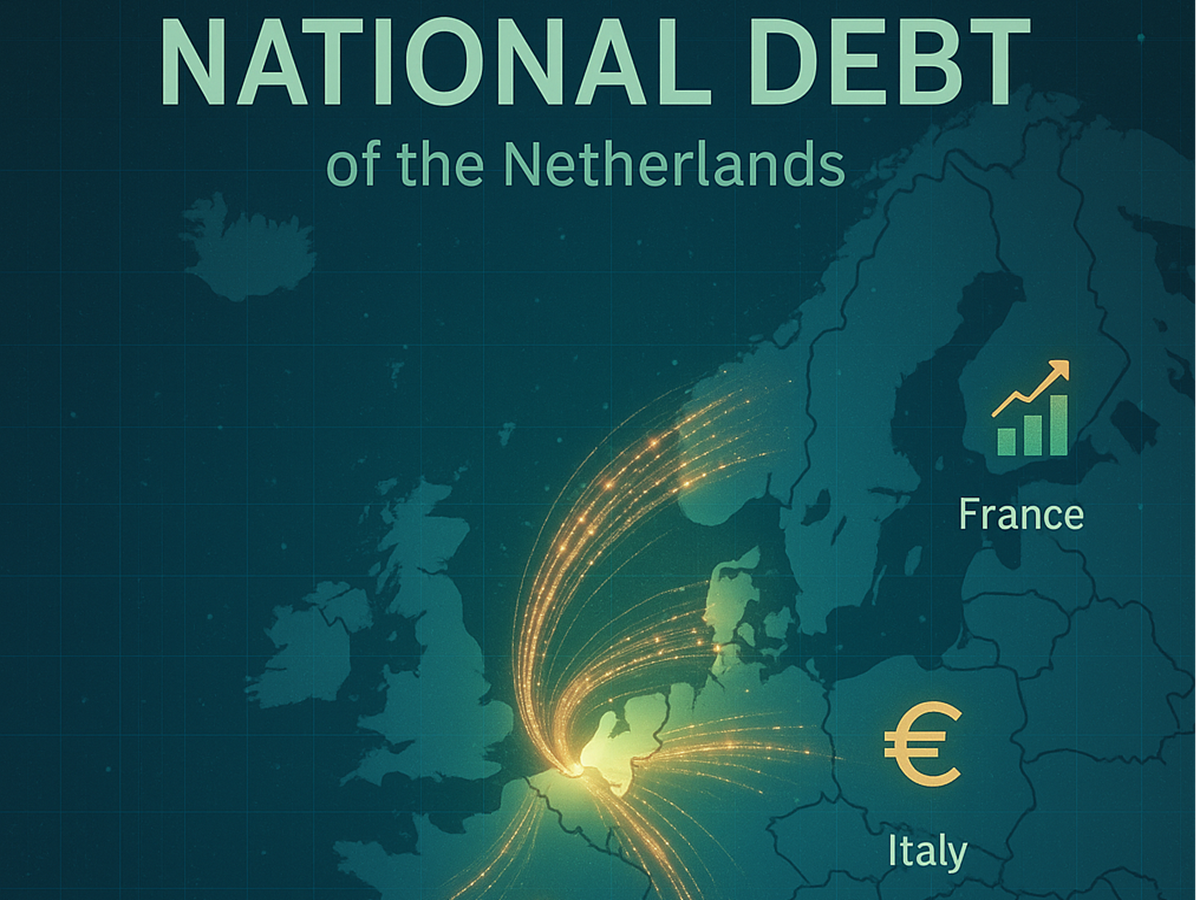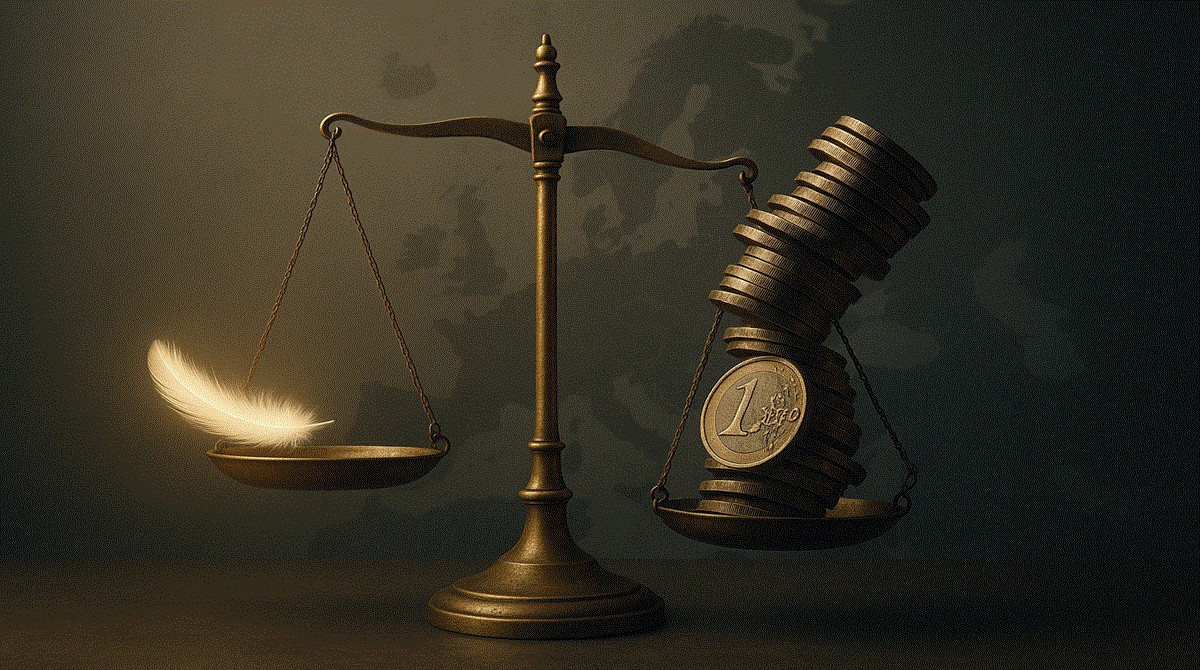Ranked: The European Countries Where Every Citizen Owes Over €50,000
Forget the Debt-to-GDP ratio for a moment. When we look at the raw debt burden per citizen, a new and surprising map of Europe emerges. We rank the EU-27 by debt per capita.

The Invisible Price Tag
When economists talk about national debt, they usually speak in percentages. “Italy’s debt is 140% of GDP,” or “France has breached the 110% mark.” These numbers are abstract. They describe the health of the state, not the burden on the citizen.
But what if we took the colossal national debts of Europe and divided them equally among every man, woman, and child? The results paint a radically different picture of the European Union—one that places a surprisingly heavy price tag on citizens of countries often considered 'wealthy'.
Using live data projections and 2025 population demographics, we analyzed the Debt Per Capita across the EU-27. The results reveal a distinct '€50k Club'—countries where every newborn baby effectively starts life with a mortgage-sized share of public debt.
1. Belgium: The Surprise Leader (€56,885)
While the world looks at Italy or Greece, Belgium quietly takes the top spot for debt intensity per person among major EU economies. With a total national debt approaching €671 billion and a relatively small population of 11.8 million, the math is unforgiving.
Every Belgian citizen now carries a theoretical public debt burden of nearly €57,000. Unlike southern European countries, Belgium’s high personal wealth often masks this public liability, but the pressure on future fiscal budgets is undeniable.
2. Italy: The Heavyweight (€52,164)
It comes as no surprise that Italy is near the top. With a massive €3 trillion mountain of debt, the sheer scale of borrowing is hard to comprehend. However, because Italy has a larger population (almost 59 million) to shoulder this load, the per-capita figure is actually slightly lower than Belgium's.
Nevertheless, at over €52,000 per person, the burden remains critical. This figure explains why Italian bond yields are so sensitive to market changes; the load on each taxpayer is nearly at the breaking point.
3. France: The Fast Riser (€49,945)
France is currently the fastest-growing debtor in Europe in absolute terms. The French debt clock is ticking upwards at a rate that outpaces its neighbors. Currently hovering just under the €50k mark, France is likely to join the '€50k Club' before 2026.
The contrast with its neighbor, Germany, is stark. The average German carries 'only' roughly €32,000 of public debt—a difference of nearly €18,000 per citizen compared to the French.
The 'Frugal' East
On the other end of the spectrum, the map turns green. Eastern European and Baltic states continue to run remarkably lean operations. Estonia remains the EU’s poster child for fiscal discipline, with a debt per capita of just roughly €7,230. Bulgaria follows closely behind.
This divide creates a Europe of two speeds: the legacy economies of the West carrying heavy historical baggage, and the newer economies of the East traveling light.
Does It Matter?
Economists argue that public debt isn't like a credit card; it doesn't always need to be paid back to zero. However, the cost of that debt (interest payments) is paid by taxpayers. A higher debt per capita means a larger portion of your future taxes goes purely to servicing the interest on past spending, rather than funding schools, hospitals, or roads.
Want to see the live numbers for your country? Check our Live Debt Map Comparison.
More articles
Related EU debt and fiscal insights to explore next.

11 Nov 2025
Can the US Handle More Debt Than Europe?
Several EU countries are already above 100% debt-to-GDP, just like the United States. Yet markets treat US debt very differently. This article explains why.

07 Nov 2025
Europe's Trillion-Euro Question: When Is National Debt an Investment?
As Europe faces the colossal costs of the green and digital transitions, the old rules of austerity are being challenged by a new logic: borrowing not for consumption, but for survival and future growth.

05 Nov 2025
The 'Swedish Wonder': National debt is falling and the live tracker is green
In an EU where most national debts are rising, Sweden is doing the opposite. With a debt ratio of just 34% and a declining counter, we look at how the 'top of the class' manages this outside the Eurozone.

01 Nov 2025
Ticking Up by €118/Second: Is the Netherlands Still Europe's 'Frugal' Leader?
The Dutch national debt is rising by €118 every second. While its 42.7% debt-to-GDP ratio remains well below the EU limit, this live tracker reveals a more complex picture compared to its European neighbors.

25 Oct 2025
Europe’s Debt Thermometer, Q2 2025: Who’s Up, Who’s Down — and Why It Matters
New Eurostat data for Q2 2025 reveals a Europe moving in two directions: while some countries’ debt-to-GDP ratios climbed, others managed to bring them down. Here’s what’s driving the shift beneath the surface.

21 Oct 2025
The End of Free Money: Europe’s Silent Debt Crisis
As interest rates rise, governments face a new reality. The question is no longer if debt becomes a problem, but when.